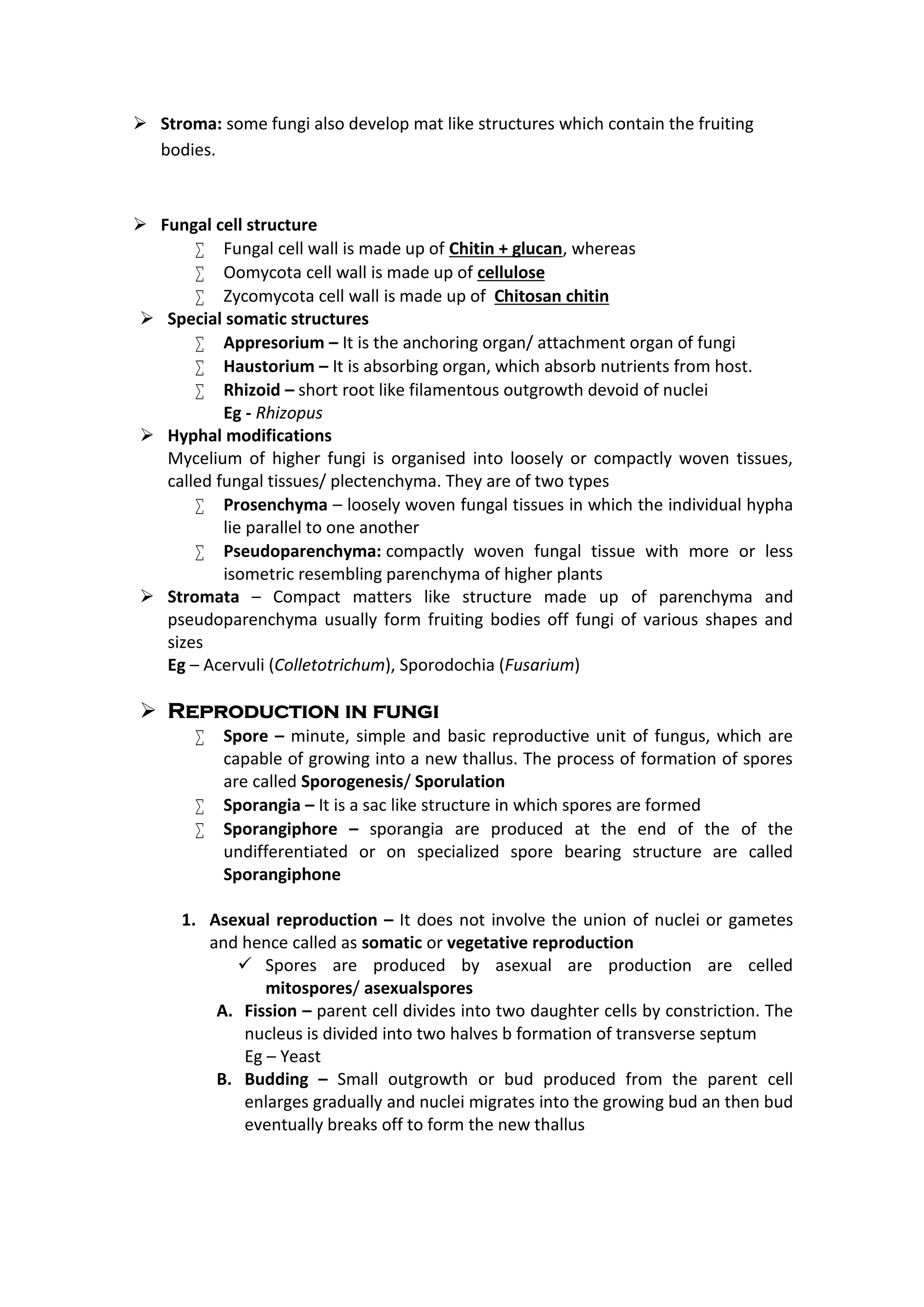Fungi are eukaryotic organisms that can reproduce both sexually and asexually. They obtain nutrients through absorption.
The body of a fungus is called a thallus, made of filamentous hyphae that form a mycelium. Hyphae may be septate or coenocytic. Fungi reproduce sexually through the fusion of gametes and asexually via spores like mitospores, arthrospores or conidia. Sexual reproduction involves plasmogamy, karyogamy and meiosis.
Fungi have diverse morphologies and reproduce through various structures like pycnidia, sporodochia, and sori. They also exhibit






